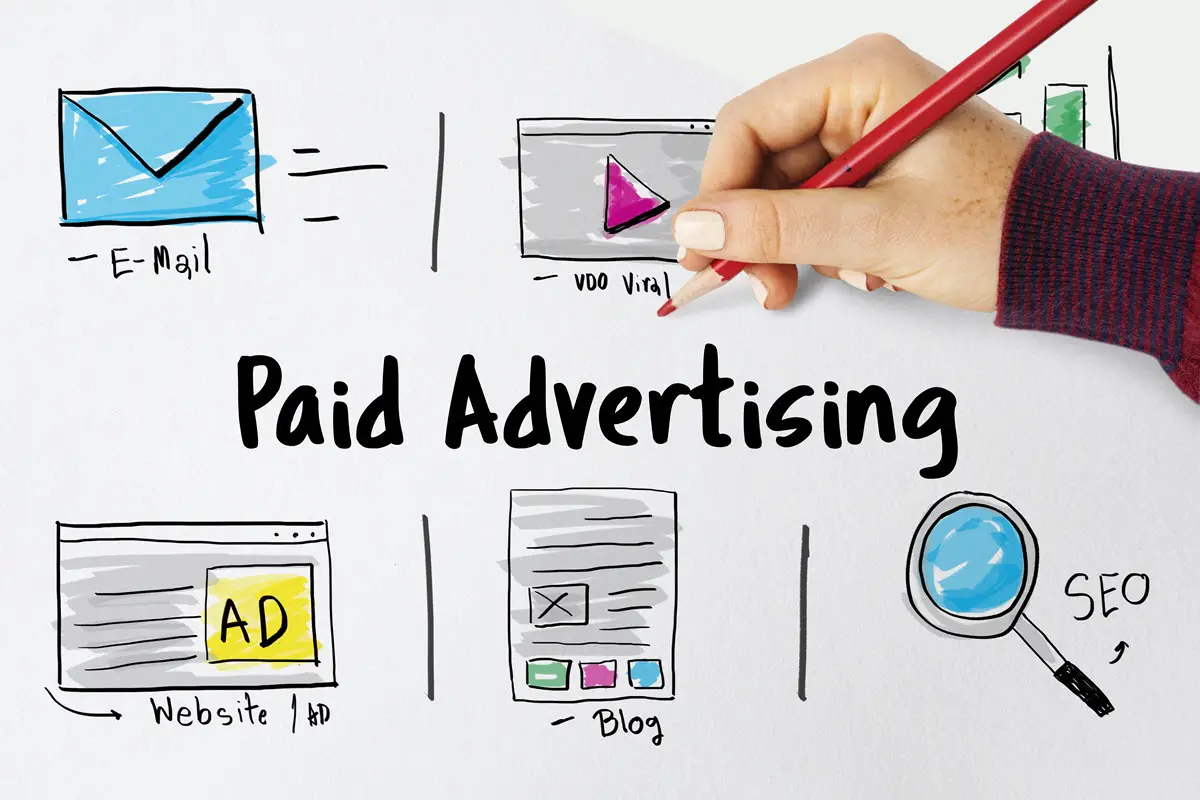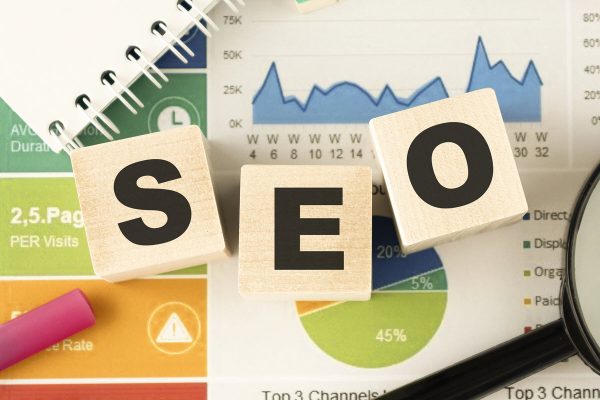Harnessing the Power of Paid Advertising: Strategies for a Competitive Edge

Estimated reading time: 6 minutes
Table of contents
- Key Takeaways
- Introduction to Paid Advertising
- Crafting an Effective Paid Advertising Campaign
- Navigating Different Paid Advertising Platforms
- Budgeting and Cost Management for Paid Advertising
- Understanding Programmatic Advertising
- Enhancing Paid Advertising with SEO Strategies
- Mobile Advertising: Capturing Audiences on the Go
- The Future of Paid Advertising
- Analyzing Paid Advertising Performance
- Concluding Thoughts on Paid Advertising
Key Takeaways
- Understanding your target audience and crafting compelling creatives are foundational to successful paid advertising.
- The choice of platform is critical and should align with campaign objectives and target demographics.
- Advertising budgets should be allocated based on data-driven strategies to maximize ROI.
- SEO and paid advertising should be integrated to enhance overall digital marketing effectiveness.
- The future of paid advertising includes adapting to AI advancements, privacy regulations, and ongoing tech evolution.
- Analyzing campaign data is vital for optimizing ad performance and driving continuous improvement.
Introduction to Paid Advertising
As the digital realm expands, businesses constantly battle to capture attention in a crowded marketplace. Paid advertising stands out as an effective weapon, providing the means to quickly thrust a brand into the spotlight and drive valuable conversions. This online advertisement practice has evolved into a sophisticated blend of art and science—where appealing visuals, compelling narratives, and strategic placements converge to influence the audience’s purchase decisions. It is a process where Ottawa PPC experts who drive conversions demonstrate their mastery by navigating complex ad networks and leveraging consumer insights.
Building a successful paid advertising campaign involves a deep understanding of both demographics and psychographics. Experienced marketers dissect vast amounts of data to laser-target advertisements to individuals most likely to engage with the product or service. Today’s granularity means ads can be tailored based on consumer behavior, search patterns, and even life events, ensuring each ad dollar is spent on the most promising prospects. When these elements align, paid advertising is not just an expenditure but an investment yielding measurable success.
Crafting an Effective Paid Advertising Campaign
Creating a resonating paid advertising campaign is akin to composing a symphony; every element must work harmoniously. The campaign starts with clearly understanding who your audience is and what solutions they seek. This targeted approach is followed by creating visually striking designs and persuasive copy that grabs attention quickly. Diving deeper into the methodology, the power of A/B testing lies in its ability to pit one ad variant against another, refining elements such as headlines, images, and calls-to-action to determine which combinations perform best.
The most impactful advertisements evoke emotions and provoke thought, often leading to a swift path to purchase. This requires crafty messaging aligned with brand voice and strategic placement that intersects with the consumer journey. By understanding the triggers and desires of the intended audience, advertisers craft campaigns that are seen and felt, leading to increased engagement and higher conversion rates.
SEE ALSO: Audio Advertising: Everything You Need To Know
Navigating Different Paid Advertising Platforms
Choosing the right platform for paid advertising is crucial and demands a strategic approach. Google AdWords provides a robust platform for search engine marketing, positioning ads directly in the line of sight of users actively searching for similar products or services. On the other hand, social media platforms offer a dynamic environment for ads that can harness the power of social engagement and peer influence. It’s not just about choosing a platform but mastering it. Each platform has its own set of rules, targeting options, and format specifications. For example, Instagram excels with visually striking content, while LinkedIn might be more suitable for B2B professionals looking for thought leadership content. Identifying where your audience congregates and how they interact on each platform is critical to ensuring your message is seen and resonated with.
Budgeting and Cost Management for Paid Advertising
Money well invested in paid advertising can reap rich dividends. However, this requires meticulous budgeting and a keen eye on cost management. Deciding where to channel your marketing budget involves assessing each platform’s potential ROI. It’s not merely about spreading your funds evenly but strategically investing in campaigns that resonate with your audience and align with your overall marketing objectives. In paid advertising, bidding strategies like CPC or cost-per-impression (CPM) allow marketers to control spending while optimizing ad views and engagements.
Phrases such as ‘maximizing ROI’ and ‘cost-effective strategies’ are more than just industry jargon—they are the markers of a successful campaign. They represent the constant calibration of budget allocation against campaign performance, ensuring every cent contributes to your business goals. Continuous monitoring and adjusting campaigns according to performance data is a fundamental practice distinguishing thriving businesses in digital advertising.
Understanding Programmatic Advertising
The advent of programmatic advertising has revolutionized the ad-buying world. Automating the purchase of ad space, it uses machine learning algorithms to buy and place ads in real-time, maximizing efficiency and impact. This data-driven approach is pivotal in reaching highly targeted audiences with speed and precision. One can delve deeper into this subject through an authoritative Adweek resource, which sheds light on how crucial data is for smart programmatic ad-buying decisions.
The power of programmatic advertising is not limited to automation but extends to its capability to leverage vast amounts of user data to make informed, strategic ad placements. This ensures that the right message reaches the right people at the right time, which is the cornerstone of effective advertising. By harnessing real-time metrics and adjusting bids accordingly, advertisers can take advantage of the most opportune moments to engage with potential customers.
SEE ALSO: 8 Tips for Using Videos Can Engage Your Audience
Enhancing Paid Advertising with SEO Strategies
The alignment of paid advertising and SEO strategies can significantly boost a brand’s visibility and credibility. While paid advertising offers immediate visibility, integrating SEO can bolster the longevity and impact of your online presence. This symbiotic relationship is founded on the principle that a well-ranked web page can enhance ad performance, leading to a more prominent digital footprint.
Strategic keyword integration, content quality, and user experience are SEO dimensions that augment paid ad campaigns, making them more effective and cost-efficient. By creating content that organically attracts traffic, businesses can complement their paid advertising efforts, forming a comprehensive approach that captures both the spontaneous and the deliberate online consumer.
Mobile Advertising: Capturing Audiences on the Go
As the use of smartphones becomes ever-more ubiquitous, mobile advertising is fast becoming a staple in the modern marketing mix. Leveraging the power of on-the-go connectivity, mobile-centric ads must be responsive, catering to varied screen sizes and orientations. Incorporating location intelligence into mobile ads opens up avenues for hyper-local marketing, targeting users precisely based on their geographic location, enriching ad content’s relevance, and intensifying consumer engagement.
The Future of Paid Advertising
Looking to the horizon, the future of paid advertising is set to be shaped by ongoing technological advancements. AI and machine learning are poised to offer unprecedented insight into consumer behavior, allowing for hyper-personalized ad campaigns. At the same time, the landscape is adapting to heightened consumer awareness around privacy. Marketers must navigate the thin line between personalized advertising and respecting user privacy, which is increasingly regulated globally.
Analyzing Paid Advertising Performance
Decoding the success of a paid advertising campaign hinges on a rigorous analytical approach. Tracking metrics like click-through rates, conversion rates, and audience engagement provides a quantifiable understanding of campaign performance. Modern analytics tools offer a granular data view, enabling advertisers to discern patterns and optimize strategies in real-time. This relentless pursuit of data-driven optimization underscores the importance of adaptability in the ever-dynamic arena of digital advertising.
Concluding Thoughts on Paid Advertising
Paid advertising commands a central role in the modern digital marketing strategy. The insights and practices discussed here provide a blueprint for constructing robust, result-driven ad campaigns. While creativity sparks interest and technology drives efficiency, strategically applying these resources will cause the path to sustained online success and visible business growth. By staying attuned to industry trends and leaning into data analytics, marketers can steer their campaigns to resonate with audiences today and well into the future.







